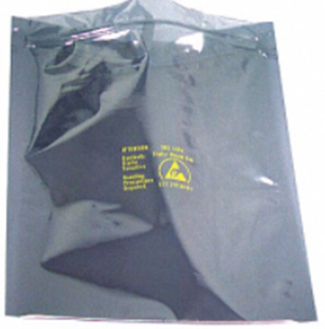Guidelines for packaging PCBAs for shipment
Last Updated: March 8th, 2023
Our goal is to establish the most efficient packaging method, but due to the variations of PCBA design, weight, and components populated on the board, we cannot define a single packaging method and materials. So it is necessary for the packaging operator to use your best judgment and packaging standards to secure the PCBA to protect it from ESD, shipping, and handling damages. The following are the minimum requirements for packaging of all MacroFab PCBA, unless an explicit packaging specification is provided.
Basic requirements:
- Each PCBA must be individually sealed with a desiccant packet inside a RoHS compliant ESD bag.
|
ESD bag |
Desiccant pack |
- Header male pins protruding from the PCBA must be protected with an ESD foam to prevent the pins from being damaged or bent in shipping.
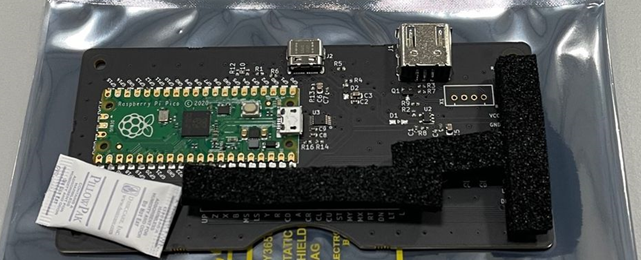
ESD foam over pins
- If cardboard dividers are used to separate PCBA from making physical contact with each other, then the outermost slots must not be used and must be left empty to act as an impact cushion.
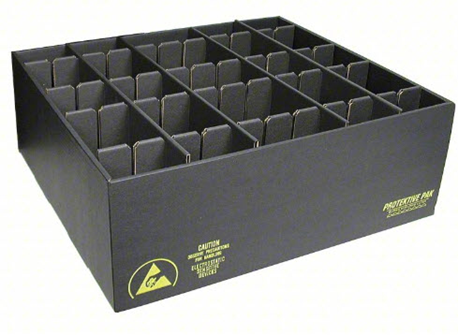 |
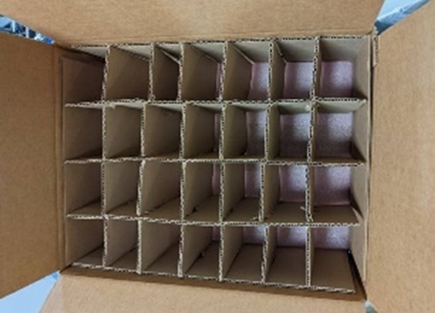 |
Packing dividers
- The bottom, top, and surrounding sides must have adequate protection against impact. Line all sides of the box with foam, cardboard or equivalent.
- Generally, no more than three layers of PCBA should be packed into a box to avoid damage.
- Shipping boxes must not be overloaded with product. No filled and sealed box should weigh more than 25 lbs.
Additional requirements:
- For PCBA that are 2"x2" or smaller: the ESD bag must be placed individually inside of a self-seal antistatic bubble bag or equivalent. Consider using self seal bubble bags, such as those shown here.
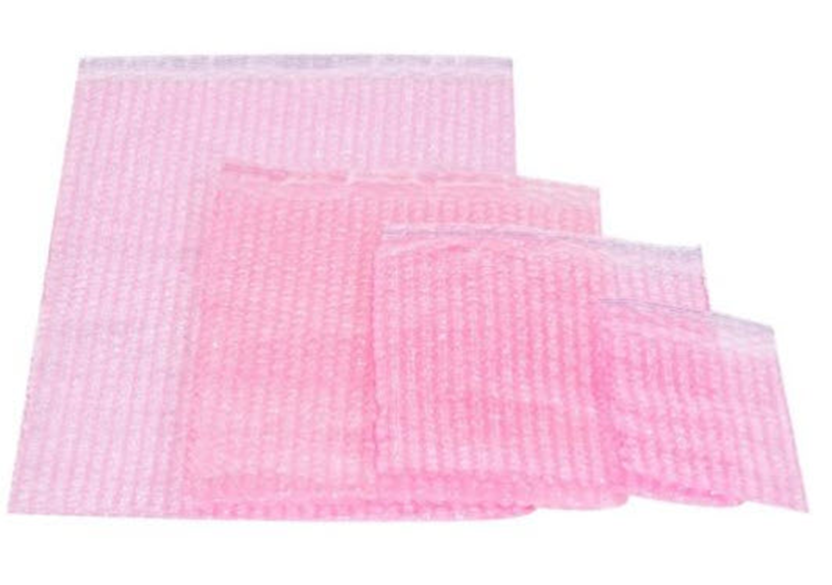
Bubble bags
- For boards that are larger than 2"x2" but smaller than 5"x5": the ESD bag must be individually wrapped with one (1) layer of antistatic bubble wrap or equivalent. For larger units, consider using larger scale bubble wrap.
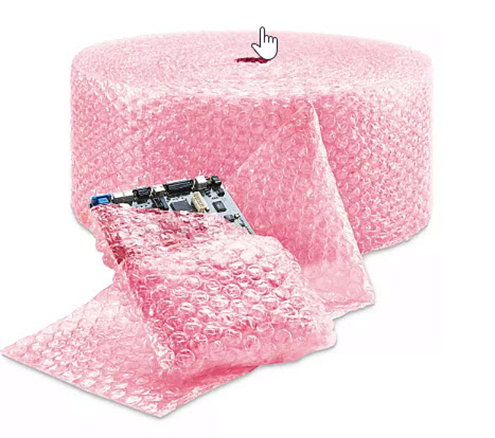
Anti-static bubble wrap with large bubbles
- PCBA with big components must have two or more layers of antistatic bubble wrap or equivalent.
- For boards that are larger than 5"x5": the ESD bag must be individually wrapped with two or more layers of antistatic bubble wrap, and then placed into a box with a cardboard divider or ESD foam divider or equivalent.
Examples of acceptable packaging:
Each PCBA must be individually sealed with a desiccant packet inside a RoHS compliant ESD bag.
Header male pins protruding from the PCBA are protected with an ESD foam to prevent the pins from being damaged or bent in shipping.
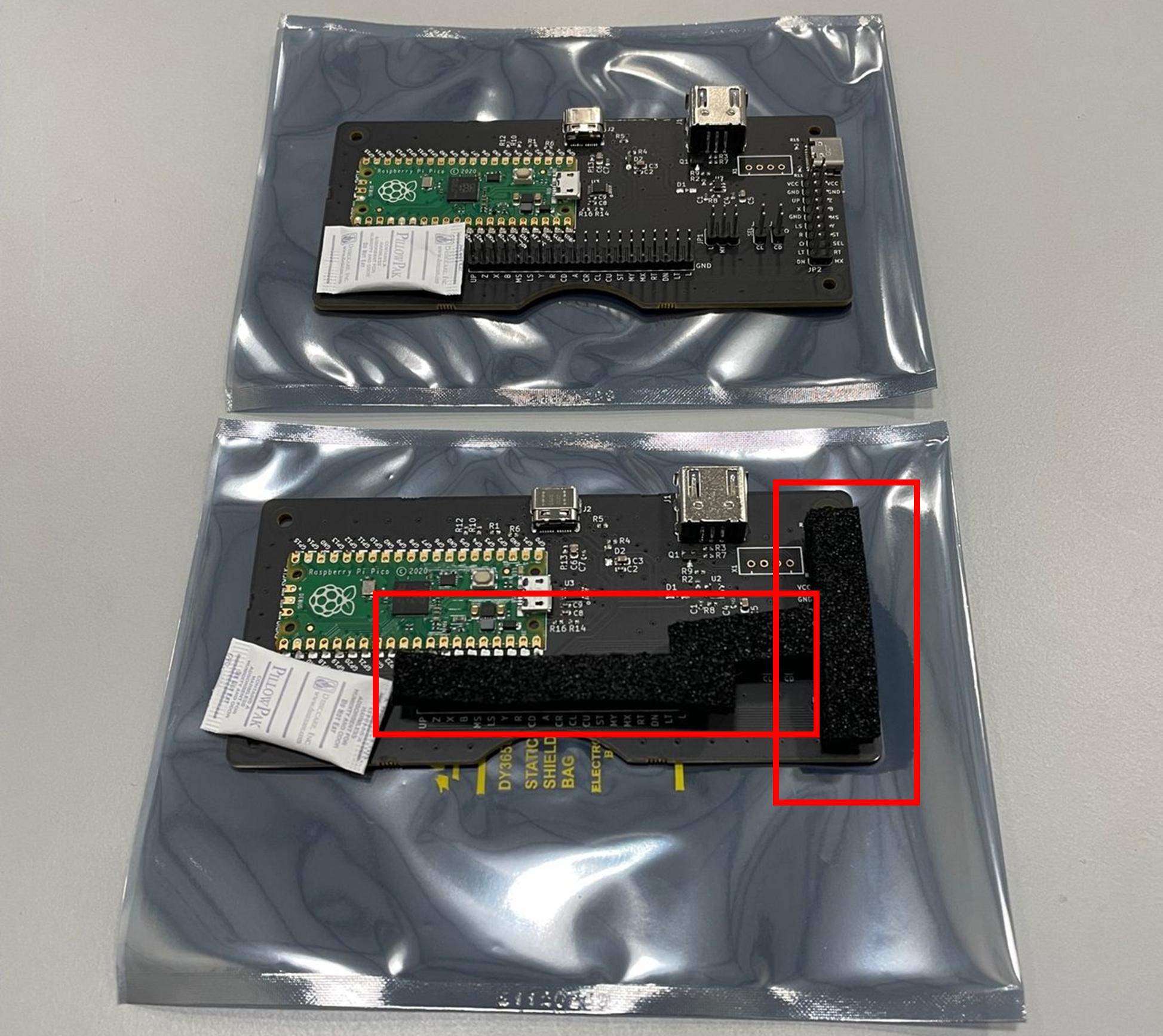
This large board is in an ESD bag wrapped multiple layers of antistatic bubble wrap, and then placed into a box surrounded by antistatic bubble wrap.
NOTE: On the left, the top layer of bubble wrap has been removed to show the inner structure.
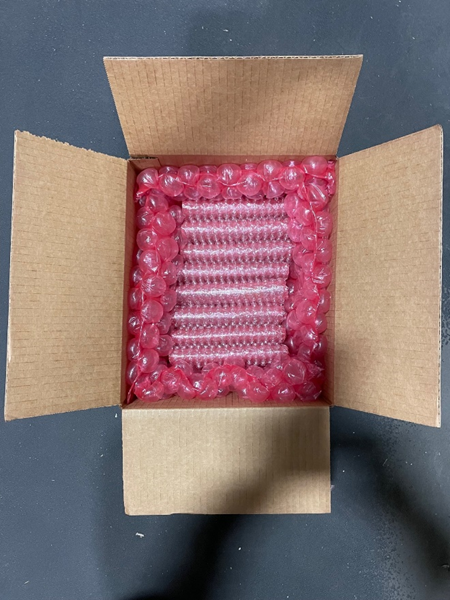 |
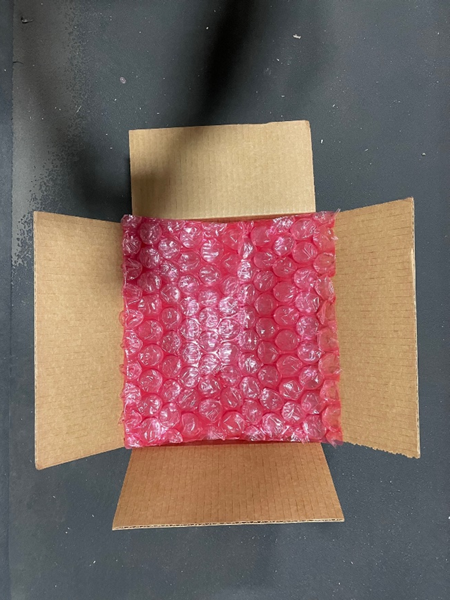 |
ESD boxes are a good choice for shipping bubble wrapped units.
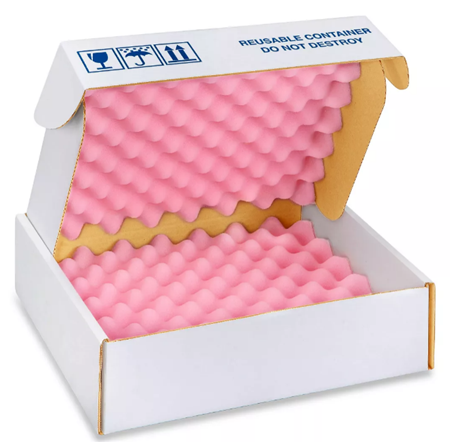
Examples of unacceptable packaging:
PCBA inside of ESD bags were allowed to come into contact with each other inside of the shipping box.
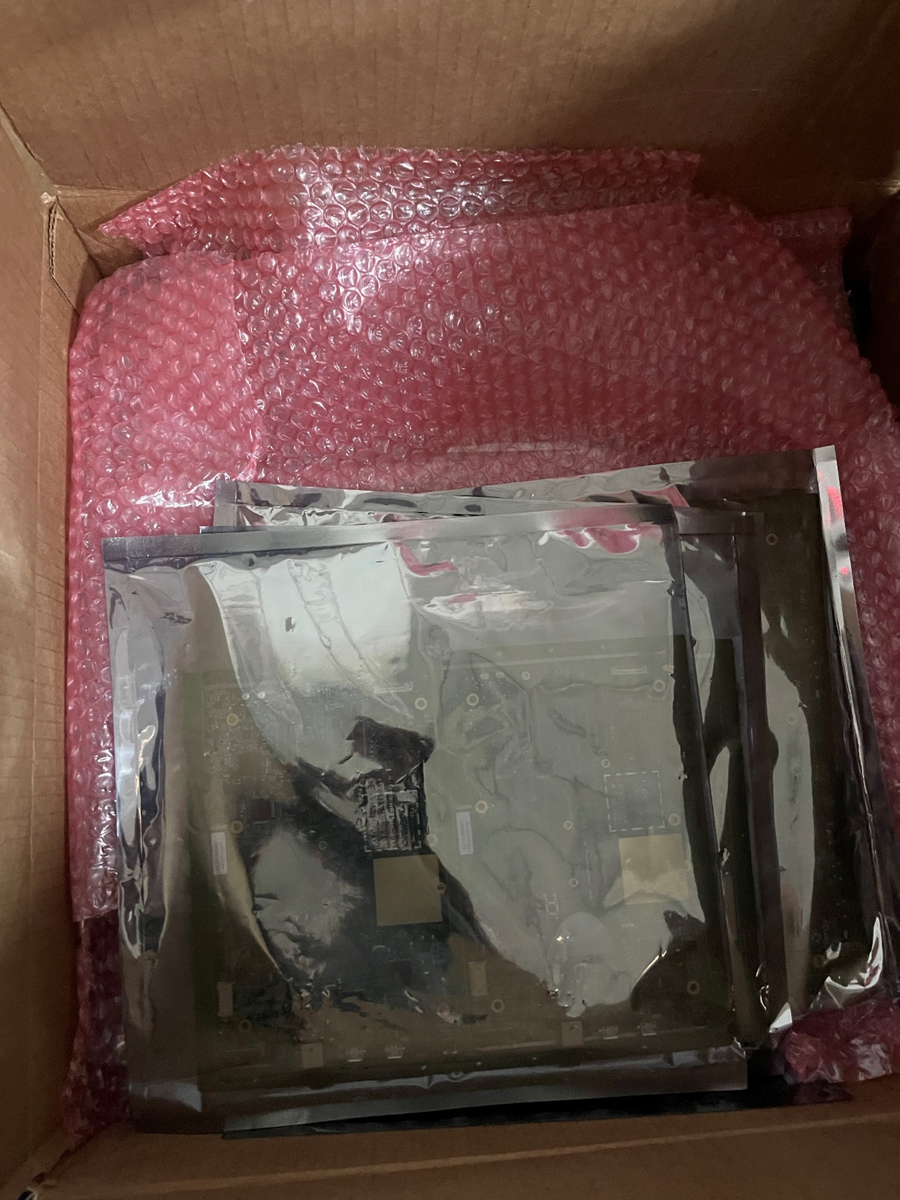
More than 3 layers of PCBA were packed inside of the shipping box.
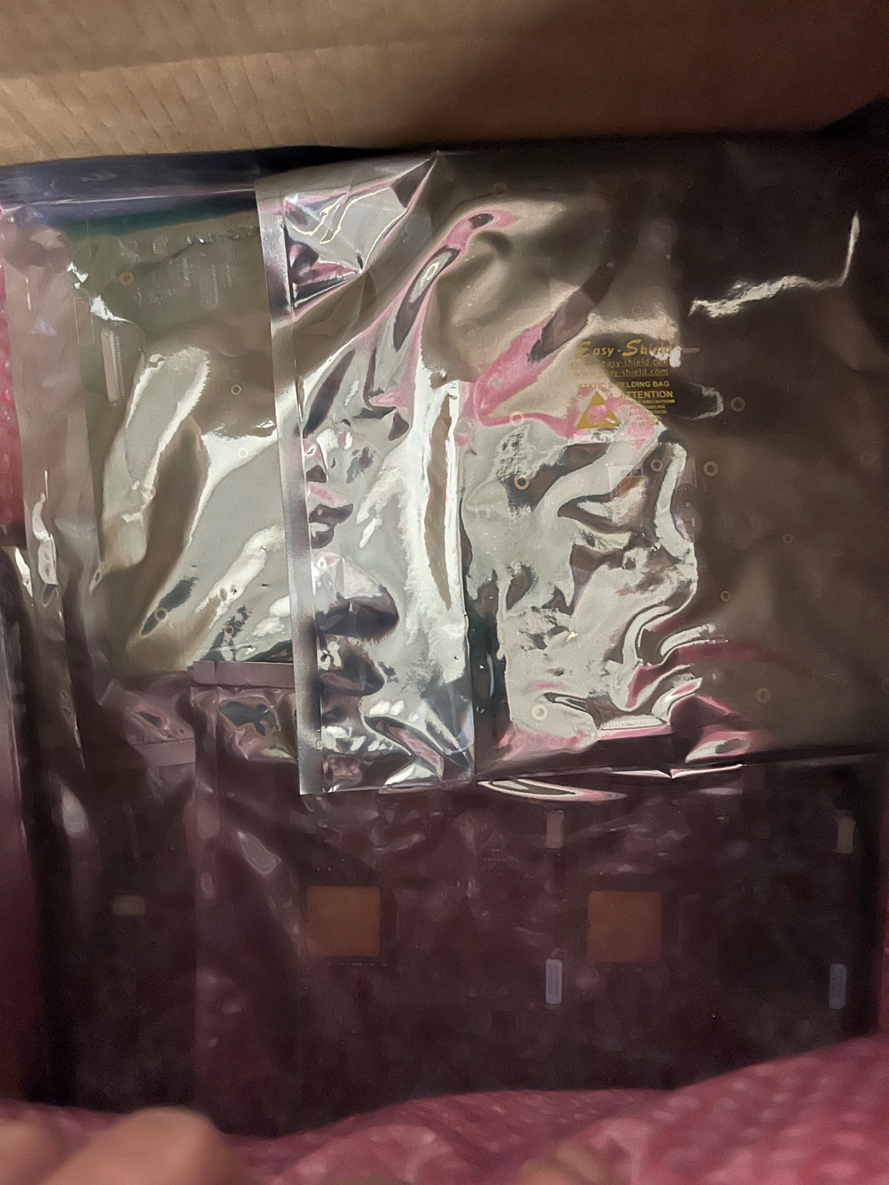
PCBA were placed in unsealed ESD bags, were unprotected by bubble wraps, and had more than 3 layers of PCBA packed inside of the shipping box.

